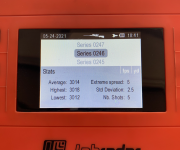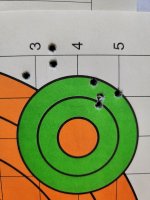I have a limited background in reloading - mostly smaller quantities of precision-ish rifle loads on a single stage press. I've been working on upping my reloading game in general but I'm still doing rifle reloading on a single stage press but have picked up an annealer, chargemaster, and other items to improve the process. In a somewhat unrelated move I acquired a Dillon 750 last year and later a case feeder looking to do some handgun loads on it and make some case prep for rifle more efficient. My SIL built an AR so I thought I could load some 5.56 for him and proceeded to buy or trade for a bunch of brass - mostly range pick-up.
I'd like to load rounds mostly for plinking but also provide good consistency out to say 200 - 300 yards. The brass was mixed and pretty dirty so I gave it a quick tumble before decapping. Its all mixed manufacturers so my question is: Do I need to sort by manufacturer prior to reloading or can I get decent consistency just tossing it into the case feeder and loading away? Any other steps I can take to improve consistency without sorting? Or - do I even need to worry about it given the somewhat limited range?
I'd pay attention to other details in the process but how key is brass sorting? It is thousands of cases so it not a task I'd find pleasant.
Thanks in advance!
I'd like to load rounds mostly for plinking but also provide good consistency out to say 200 - 300 yards. The brass was mixed and pretty dirty so I gave it a quick tumble before decapping. Its all mixed manufacturers so my question is: Do I need to sort by manufacturer prior to reloading or can I get decent consistency just tossing it into the case feeder and loading away? Any other steps I can take to improve consistency without sorting? Or - do I even need to worry about it given the somewhat limited range?
I'd pay attention to other details in the process but how key is brass sorting? It is thousands of cases so it not a task I'd find pleasant.
Thanks in advance!




